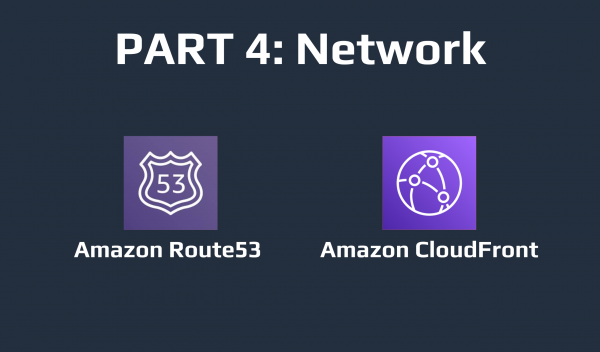Last updated on May 29, 2024
Cloud Service Providers, such as AWS, use various networking features to power its cloud computing platform. Having foundational computer networking knowledge will certainly come handy to properly configure your cloud applications and systems. It’s important to know about the basics such as the 7 layers of the Open System Intercommunication (OSI) Model and Domain Name System (DNS) but fortunately, AWS makes some parts of networking easier for us. Welcome to part 5 of my 6-part series called Basics of the Basics to AWS, where I introduce you to AWS by breaking it down into smaller digestible concepts related to software development.
In this article, I will be talking about AWS Networking Services, but we’ll be focusing on Content Delivery Services. Before we proceed with the services, we’ll be talking about IP Addresses, DNS, and Latency. The services included in this article are Amazon Route 53 and Amazon CloudFront. The format for this article is a bit different from the previous ones because we’ll be intertwining the terms with the services. Let’s get started!

Amazon Route53 and Amazon CloudFront
IP Addresses, DNS, and Amazon Route 53
Computers are connected to each other through the Internet. Since there are a lot of computers on the Internet, they need to find a way to find each other. Just like how we find locations in our maps through addresses, computers find each other through IP Addresses. IP Addresses are a bunch of numbers in a specified format (IPv4 and IPv6) that tell computers how to find each other in the network. When one computer wants to send a message to another computer, it scours the Internet looking for the recipient computer’s IP Address. When we create an EC2 instance to host our UI, we are given a random public IP Address that other people can use to access our UI. The problem with IP Addresses is that they are built for computers, not humans. IP Addresses are very hard to remember, and if we want to have more users accessing our website, we need a way to make them familiar to our website. For this reason, we have the DNS. The DNS or Domain Name System allows us to buy domain names and register our IP Addresses to these domain names. These domain names are human-readable text (i.e., www.google.com, www.youtube.com, etc.), which allows users to access our website not with IP Addresses but with something else easier to remember. Computers cannot understand these domain names, so they have to ask a DNS to resolve this for them. The computers give the DNS a Domain Name, and the DNS returns an IP Address that the computer can use. Introducing Amazon Route 53. Route 53 is a DNS that allows us to buy domain names and register our IP Addresses. This allows users to easily access our application. However, a new problem arises.
Latency and Amazon CloudFront
Our applications are now accessible to anyone all over the world. That’s great news! The problem is that our application, even though it’s hosted on a virtual server, is still located on a physical server somewhere in the world. Now that our application is available worldwide, we have to think of a way to deal with latency. But first, what is latency? Latency is the time it takes for information to travel over the Internet. A higher latency means more delay in the time it takes for information to get to our users. A higher latency, more often than not, is a huge inconvenience to our users. Something that can even turn them away from using our application. This is why latency is a problem. To deal with this problem, we have Amazon CloudFront. Amazon CloudFront is a Content Delivery Network service that allows us to deliver our content to end-users worldwide in a faster and more efficient way. Amazon CloudFront works by caching our application in multiple data centers worldwide called Edge Locations. When our users access our application, they access it through the data centers instead of from our main server. This allows for a much lower and more consistent latency from anywhere in the world.
We are now done with the fourth part of our Basics of the Basics to AWS series. In this article, I talked about the concepts of IP Addresses, Domain Name Systems, and Latency. We also added 2 AWS Services to our toolkit which are Amazon Route 53 and Amazon CloudFront. In the next article, we will be talking about security with AWS.
















